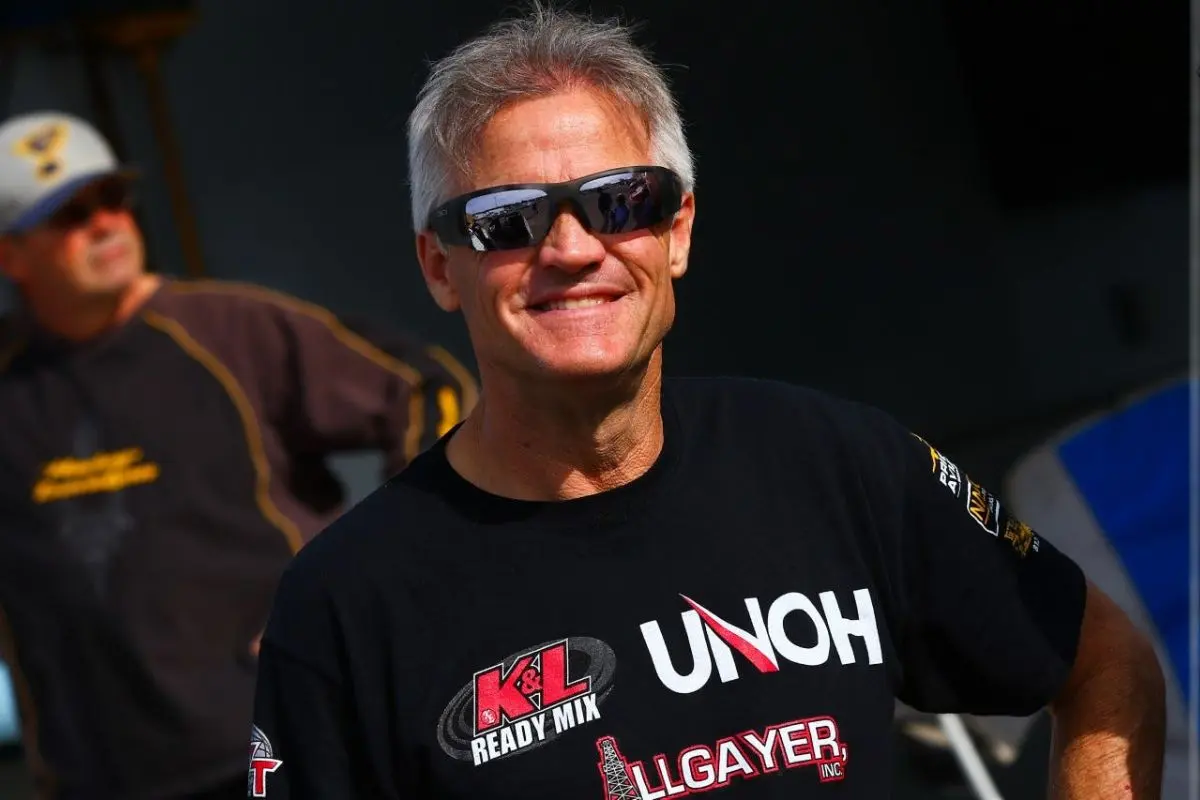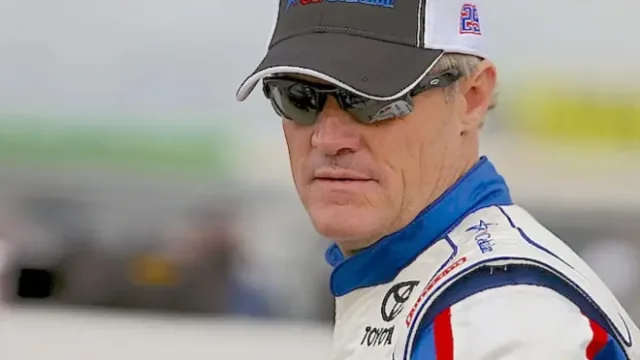Kenny Wallace Exposes FS1: Kenny Wallace has highlighted the repercussions of FS1’s decision to cancel NASCAR RaceDay, citing the network’s financial ambitions and tactical realignment as key factors. Following FS1’s 2013 debut, Fox rebranded the Speed channel to expand its sports coverage, aiming to attract viewers interested in the NBA, which required substantial shifts from traditional NASCAR programming. The high production cost—approximately $800,000 per episode—added to the show’s vulnerability. This move frustrated a dedicated NASCAR fanbase, raising concerns about the sport’s unique identity amidst FS1’s broader sports focus.
Key Highlights
- Kenny Wallace attributes NASCAR RaceDay’s cancellation to FS1’s financial priorities over NASCAR’s traditional identity.
- FS1’s launch in 2013 shifted focus from NASCAR to broader sports, including the NBA.
- NASCAR RaceDay’s production costs were $800,000 per episode, influencing FS1’s decision to cancel.
- FS1’s strategy aimed to diversify audience reach and compete with growing NBA interest.
- NASCAR fans were left without a race weekend staple, raising concerns about future viewer engagement.
Kenny Wallace Reveals the Truth Behind NASCAR RaceDay’s Shutdown
Kenny Wallace, known for his straightforward approach, investigated the reasons behind the cancellation of the popular NASCAR RaceDay show. As a driver-turned-TV representative, Wallace has never shied away from expressing his views, and this time he pulled back the curtain on the abrupt end of a show that had become a staple for NASCAR enthusiasts.
His insights reveal a narrative of corporate decisions driven by financial motives, leaving devoted fans in the lurch. Wallace, who has built a reputation for his unfiltered honesty, detailed the circumstances leading to the show’s demise, pointing fingers squarely at his former employer’s avarice.
According to Wallace, the decision to shut down NASCAR RaceDay was not based on a lack of viewership or relevance but rather on financial calculations that prioritized revenue over tradition.
The disclosure that the show was sacrificed in the name of profit maximization highlights a broader trend within the sport’s broadcasting strategy, where monetary considerations often overshadow the passion and loyalty of its fan base.

NASCAR’s Media Partner and FS1’s Emergence
Kenny Wallace’s insights about NASCAR RaceDay’s cancellation offer a peek into the complex dynamics between tradition and modernization in sports broadcasting.
During the early 2000s, NASCAR was a beloved staple on television, capturing the hearts of motorsport enthusiasts with its NASCAR RaceDay show. However, as the landscape of sports broadcasting evolved, network priorities shifted, leading to the show’s eventual cancellation in 2013.
Fox, a key media partner for NASCAR, recognized the need to diversify its portfolio and audience reach. The emergence of FS1 marked a tactical pivot for the network, as it aimed to cater to a broader spectrum of sports fans, including those of the burgeoning NBA and soccer audiences.
Eric Shanks, Fox network president, conveyed the bittersweet decision to Wallace, highlighting the necessity of such a move despite personal reluctance. As Shanks reportedly stated, the creation of FS1 required sacrifices, including ending NASCAR RaceDay, to establish a channel poised for broader sports competition.
“Eric Shanks, the president, walked right up to me and he was very sad, and he said ‘Kenny, I’m sorry. I did not want to get rid of NASCAR Race Day, but we had to because we’re starting the new FS1.’ So, they k—-d it because they wanted to start a new network, Fox Sports One.” – (Wallace)
The decision to rebrand the Speed channel into FS1 was representative of broader industry trends, where networks sought to remain competitive amidst increased sports viewership diversity. By expanding its offerings beyond motorsports, Fox positioned FS1 as a formidable contender against established sports networks.
Production Costs Contributed to the Show’s Closure
Why did the beloved NASCAR RaceDay show meet its untimely end? Among the diverse factors contributing to its closure, high production costs played a notable role. Kenny Wallace, a former host, shared that each episode of NASCAR RaceDay demanded a staggering $800,000 to produce. This hefty price tag was attributed to several elements intrinsic to the show’s format and scale.
“Well, another reason was this: it cost $800,000 per show to operate it. So, you say why did it cost that much money? Well, satellite time was not expensive back in those days, but we had big stages. We had a big, screened TV set up outside a lot of employees and when you put it all together, it just cost a lot of money.” – (Wallace)
- Satellite Time and Equipment: Although satellite costs weren’t exorbitant at the time, the expenses incurred from using extensive broadcasting equipment and technology were considerable. The show relied heavily on satellite feeds to connect with live audiences and experts.
- Large-Scale Staging: The show featured grand stages and elaborate setups, including large-screen TVs installed outside to engage on-site audiences. The physical infrastructure required for each broadcast added notably to the show’s operational costs.
- Human Resources: With numerous employees involved in the production, from technical crews to on-air talent, labor costs formed a substantial portion of the budget. The involvement of several specialists and commentators further escalated these expenses.
- Duration and Content: Running for two hours before each race, NASCAR RaceDay provided thorough coverage and involved interactive segments, adding complexity and cost to its production.
Despite its popularity, the financial burden became untenable, especially during FS1’s tactical shifts. Curiously, Wallace himself did not lament the show’s end, as he preferred recognition for his racing skill over his television career.
“I wanted to be known as a race car driver because I love racing. I love racing cars. So, it bothered me when people told me how good I was on TV. I wanted to be talked about as a race car driver, so it didn’t bother me that much (the shutdown).” – (Wallace)

Kenny Wallace’s Racing Career and Defending His Brother
How did Kenny Wallace’s racing career shape his enduring passion for motorsports? With an impressive 344 starts in the NASCAR Cup Series, Kenny Wallace’s career demonstrates a deep-rooted commitment to racing.
Although he never claimed a victory in the Cup Series, his record of six top-five finishes and 27 top-ten finishes speaks to his consistent performance and dedication.
In the Xfinity Series, Wallace’s career was particularly more successful, boasting nine wins, 66 top-five finishes, and 173 top-ten finishes across 547 starts. This track record has not only earned him respect in the racing community but also emphasizes his steadfast love for the sport.
Wallace’s shift from behind the wheel to a role in broadcasting has not diminished his identification as a racer primarily. His passion is apparent, not just in his career statistics, but also in his personal life.
Recently, Kenny exhibited this fervor by defending his brother, Mike Wallace, amidst criticism surrounding his planned return to the NASCAR Cup Series.
Kenny Wallace Defends Mike Wallace’s NASCAR Comeback
As Kenny Wallace‘s enduring passion for motorsports remains evident, his steadfast loyalty to family shines through in his public defense of his brother, Mike Wallace‘s NASCAR comeback.
Mike Wallace, a seasoned driver who made his NASCAR debut in 1991, is poised for a return to the track with MBM Motorsports at the Daytona 500, after last appearing in the NASCAR Cup Series in 2015.
Despite his storied history, Mike’s decision to return has sparked controversy and criticism from some quarters. Sports journalist Nick Bromberg questioned Mike’s eligibility, highlighting his age and recent absence from top-tier NASCAR races. He suggested that Mike, now 65, should not receive automatic approval for such a high-profile event.
“I’m sure this will be controversial. But a 65-year-old who hasn’t competed in a Cup Series race or a top 3 series NASCAR race on an oval since 2015 and last raced in a top 3 series NASCAR race overall in 2020 probably shouldn’t get automatic approval to attempt the Daytona 500.” – (Nick Bromberg)
These remarks prompted a robust defense from Kenny Wallace, who responded on social media platform X, criticizing Bromberg for spreading negativity.
“Would not expect anything less out of you, Nick. You’ve always been a negative reporter.” – (Kenny Wallace)
Kenny’s response emphasizes his commitment to supporting his brother’s aspirations, especially during a personal period of healing for Mike and his family, following the death of his wife. He will drive the No.66 Ford Mustang Dark Horse for MBM Motorsports, aiming to qualify for one of four open charter seats.

News in Brief: Kenny Wallace Exposes FS1
The shutdown of NASCAR RaceDay by FS1 reflects tactical decisions driven by the network’s expanding focus on competing with other sports, particularly the NBA. The financial implications of production costs played a vital role in the show’s closure.
Kenny Wallace, with a notable racing career, has been vocal in defending the legacy of NASCAR RaceDay and his brother, Mike Wallace, amidst these changes. This situation highlights the evolving landscape of sports media and its impact on traditional racing broadcasts.
ALSO READ: Kenny Wallace Relives NASCAR’s 2000s Nostalgia Amid Rumors of Its Return
